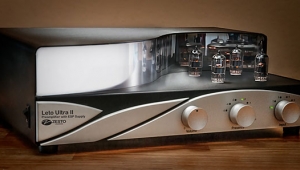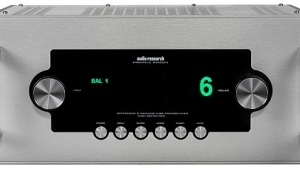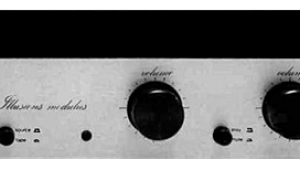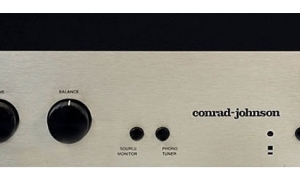| Columns Retired Columns & Blogs |
Conrad-Johnson PV9 preamplifier Measurements
Sidebar 2: Measurements
Footnote 1: The signal generator I use for everyday response and impedance measurements has a trim pot to minimize harmonic distortion. On a good day (and that is by no means every day), I can trim it by ear to about 0.75% of third-harmonic, but I have never been able to hear low-order harmonics superimposed on a pure tone that are any lower in level than this.—John Atkinson
The most relevant measurement of a phono preamplifier, in my opinion, is the accuracy of its RIAA de-emphasis. Fig.1 shows that for the PV9. It can be seen to be commendably flat across the entire audio band, or at least within the tolerance of my inverse-RIAA network, gently rolling off above 16kHz and below 16Hz. The 1kHz squarewave of the PV9's RIAA stage is shown in fig.2, the flat top implying good LF extension, and the lack of overshoot, fast risetime, and square corners indicating a flat, extended HF response. The line stage, too, was effectively flat, with –1dB points lying at 6.3Hz and 50kHz.

Fig.1 Conrad-Johnson PV9, phono stage, RIAA error (0.5dB/vertical div.)
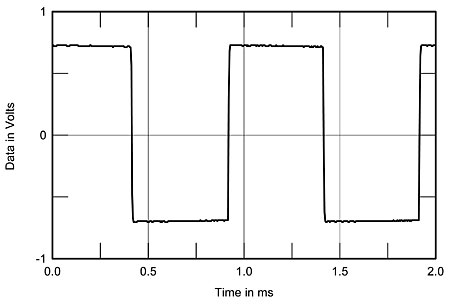
Fig.2 Conrad-Johnson PV9, phono stage, 1kHz squarewave.
The specification implies relatively high levels of distortion when compared with a typical solid-state design, at less than 0.25% of both THD and IMD, this presumably due to the minimal amount of negative feedback used. THD at this level would certainly be audible if it consisted of high odd-order harmonics, but, if second-, third-, and fourth-harmonic, would undoubtedly pass unnoticed on music program (footnote 1). This turned out to be the case, the distortion spectrum at 1kHz, for example, for a 4mV input consisting of approximately 0.3% second-harmonic, with smaller amounts of third-, fifth-, and sixth-harmonic (fig.3). Even increasing the drive level to a point well above what could be reasonably expected from a typical MM pickup cartridge didn't significantly degrade this performance.

Fig.3 Conrad-Johnson PV9, phono stage, spectrum, DC–10kHz, of 1kHz waveform at 4mV input (linear frequency scale).
Things were much the same at 20kHz: fig.4 shows the 20kHz waveform about 12dB below the onset of overload, with the output equal to just under 10V peak-peak: FFT analysis shows second-, third-, and seventh-harmonic to be noticeable, the latter very low in comparison with the first two. Once overdriven, the waveform started to triangulate rather than clip cleanly. The output at 20Hz was also relatively clean, despite the need for the circuit to provide 20dB or so more gain than at 1kHz. Phono input overload levels, assessed at the tape-out sockets, were moderate at 8.8mV (20Hz), 88.7mV (1kHz), and 1V (20kHz), while with the volume control wide open, it took 400mV input to clip the line stage, the maximum output level then reaching 18.51V RMS. Backing off the volume control will increase the line-stage overload margin to infinity, of course.

Fig.4 Conrad-Johnson PV9, phono stage, 20kHz waveform 12dB below the onset of overload.
Residual line-stage noise lay at around –69dB (unweighted) ref. 2.5V output. The phono input was a little noisier than specified, with 60Hz hum apparent at –61dB ref. 10mV input at 1kHz. This was only just audible at the listening position with the low-output Linn Troika in use via the Vandersteen 2cis, and will be inaudible with a high-output MC or MM cartridge. It also couldn't be heard via the 8dB-less-sensitive Celestions. (A caution for those like myself who like to poke around inside components: the disc input hum level rises considerably with the aluminum top-plate removed.)
Separation via the phono stage was less good than I would have thought desirable, and might correlate with the subjective feelings of rather narrow stage width (though it could be fairly pointed out that these figures are still better than any high-quality cartridge). At 20Hz, separation with the appropriate input shorted measured 45.5dB, 44.7dB at 1kHz, and 33.6dB at 20kHz. Line-stage separation was also less good than normal, at 50.5dB at 20Hz and 1kHz, worsening to 45.2dB at 20kHz.
The phono stage sensitivity measured 46.4dB, 2mV in at 1kHz, giving 420mV out from the tape-out sockets. The line stage gain was also to spec at around 31dB. With such a sensitive line stage—following in a C-J tradition, I remember J. Gordon Holt complimenting the PV5 on the fact that it had "scads of gain"—good volume-pot tracking must be considered essential, as the control will often be used toward the bottom of its rotational travel. The ALPS component used by C-J was exceptionally good in this respect, which is just as well. The two channels rarely differed by more than 0.2dB between 5 o'clock and 9 o'clock, with only 1dB difference apparent at 7 o'clock, when the music was so quiet, even from CD, that you wouldn't really care about channel balance.
Finally, I measured the preamp's output impedance to be a little higher than spec, at approximately 360 ohms. This still means that the PV9 should be relatively unfazed by longish leads and low power-amplifier input impedances, however.—John Atkinson
Footnote 1: The signal generator I use for everyday response and impedance measurements has a trim pot to minimize harmonic distortion. On a good day (and that is by no means every day), I can trim it by ear to about 0.75% of third-harmonic, but I have never been able to hear low-order harmonics superimposed on a pure tone that are any lower in level than this.—John Atkinson
- Log in or register to post comments







